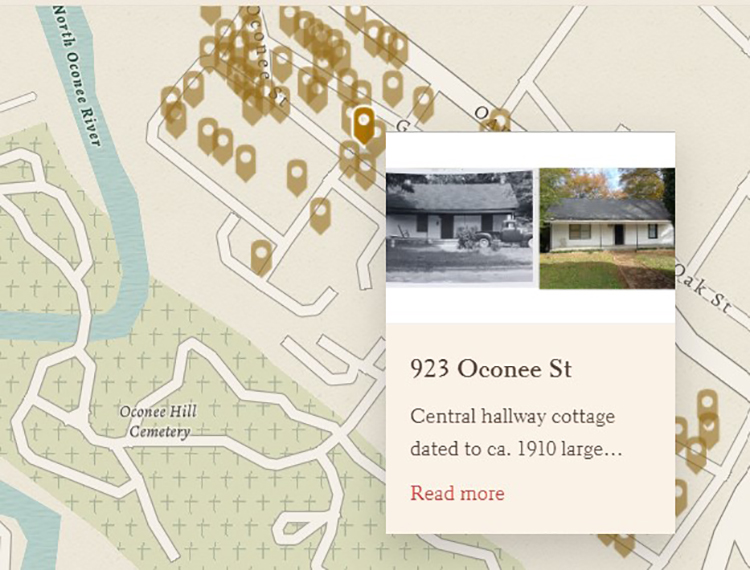Community Planning Students Help Secure $4.9M Grant

CED associate professor Stephen Ramos and his community planning students have helped secure a $4.9 million federal grant for a series of community improvement projects in Baldwin County, Georgia.

CED associate professor Stephen Ramos and his community planning students have helped secure a $4.9 million federal grant for a series of community improvement projects in Baldwin County, Georgia.

During Spring Break, Professor Cari Goetcheus, along with Master of Historic Preservation students Kayla McElreath, Cameron Nesmith, Niamh West, Jeffrey Bussey and Inga Gudmundsson, headed to Selma, Alabama to assist with post-tornado historic resource assessments.

The Homervillage master plan is a 65.2 acre development, consisting of 30 tiny home units with three different floor plan options. The goal for this master plan was to design a community for people experiencing chronic homelessness or close to becoming homeless by giving a helping hand. Early research and initial design concepts were developed by Anna Marie Scoccimaro's master's thesis. Ameliorating Homelessness Through the Built Environment explored the research behind communities that help people experiencing homelessness to thrive once again.

The Experience UGA program is a partnership between the Clarke County School District (CCSD) and the UGA Office of Service Learning which aims to bring every PreK-12 student to UGAʼs campus every year for a curricular-based field trip. This year, we welcomed students from Clarke Central High school on November 14th and from Cedar Shoals High School on November 16th. The Experience UGA trips achieved the goal of exposing high schoolers to college and the field of landscape architecture through a thoughtfully tailored experience.

The Covid-19 Pandemic forced many institutions, organizations, and individuals to rethink "business as usual." For the FindIt Program, the long-running historic resource survey program within the Center for Community Design & Preservation (CCDP), local shelter-in-place rules provided an opportunity for students to share the results of their architectural fieldwork more broadly.